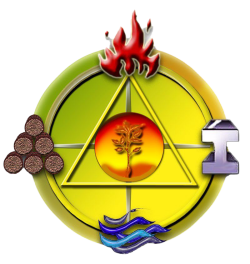Headaches are among the most frequent complaints made by human beings. More than 30% of the Federal Republic’s citizens suffer from frequently recurring headaches.
In a survey conducted in the USA, 80,000 out of 100,000 respondents declared that they had suffered from headaches once during the previous year.
Only 24,000 persons indicated that they had taken an analgetic to counter headaches during the previous two weeks.
Headache syndromes can be caused by an organic disorder, a biopsychosocial problem, biochemical disharmony or an intrapsychic conflict.
For this reason, every headache patient should be given the most thorough neurological examination possible.
Diagnosis-oriented treatment of the headache syndromes should not be provided until there has been an accurate orthodox medical diagnosis, including a comprehensive neurological examination (see neurological examination).
Possible disorders in the cranial interior cannot be ruled out unless specific neurological examination techniques are applied (Doppler ultrasonography, EEG, evoked responses).
In its classification of headaches published in 1988, the international headaches association differentiates between more than 100 forms of headache.
We all know about migraine.
Migraine and tension headaches are frequently diagnosed.
However, all of the other disorders of the cranial interior, such as
acute cerebral haemorrhages
- acute venous embolisms such as the large sinus veins
- acute serious circulatory disorders of the brain and
precursors of a stroke (cf. strokes) - haemorrhages following head traumas or minor traumas
- brain tumours
- inflammatory processes in the brain
can also lead to headache syndromes.
It is of the utmost importance that consideration should always be given to the presence of vascular, i.e. arteriovenous, malformations as a potential cause of life-threatening haemorrhages.
For this reason, it is essential that a comprehensive neurological differential diagnosis should be used to clarify the cause of the headaches; it should form the basis of all therapeutic treatment.
Holistic treatment procedures, however, are as popular as orthodox medical procedures in the treatment of headache forms.
All of the functional headache syndromes, such as headaches brought on by tension or migraine headaches, are often given inadequate treatment by orthodox medicine.
Orthodox medical therapy combined with psychotherapeutic and physiatric procedures, supported in particular by the application of the knowledge gained from traditional Chinese medicine, should be the standard in modern headache treatment.
Medical advice of a nutritional nature, too, frequently solves the patient’s headache problem.
Traditional Chinese medicine opens up wonderful methods of soothing and curing headaches.
These include not only the various acupuncture methods, but also the consistent application of the knowledge gained from Chinese dietetics and a wealth of relaxation procedures.
An experienced doctor trained in both orthodox medicine and physiatrics will then find very many parallels and interrelations between the Chinese and psychosomatic ways of thinking.
For example, many patients who frequently get very angry and are unable to deal with their anger suffer from painful muscle hardening and headaches.
In Chinese medicine, the musculature is the expressive and perfection organ of the “liver” change phase, to which – from a psychosomatic point of view – anger and fury are assigned.
We develop headaches or migraine when we have “a lice crawling over our liver” (in the sense of “something’s bugging us”) or when we are “spitting bile out of sheer anger”.
In Chinese medicine, the emotion of fury and inner agitation is assigned to the “liver” change phase, featuring the musculature, the expressive and perfection organ.
The way of thinking in traditional Chinese medicine is that of a closed system based on clear norm conventions.
Almost all physical and mental symptoms can be derived and understood once the eight guiding criteria have been diagnosed in the context of the overall interrelation, based on the knowledge gained from TCM.
Headache patients, for example, are frequently compelled to alternate between complete tension and cramp in the sense of pulling oneself together and still having everything under control on the one hand, and a certain addiction to headache pills on the other, which often finds its expression in a chronic intake of pills and can be connected to a host of other medical problems.
It could thus be observed that migraine patients, for example, increasingly take burdens and stress factors upon themselves by making excessive demands on their own performance capacity; this can trigger migraine attacks.
This refers not only to external burdens, but also to internal, emotional burdens, for example constantly putting oneself under pressure, a form of behaviour which might even have been internalised in the early childhood years.
In this area, help is provided by psychotherapeutic methods and psychotherapeutic relaxation procedures such as progressive relaxation training à la Jacobsen and autogenic training.
However, the treatment model of neurolinguistic programming can be applied usefully and can lead to a consistent easing of the headache.
As part of a systematic behavioural analysis, the doctor, together with the patient, should investigate which specific stimulant conditions are the root cause of the headaches.
Particular eating and sleeping habits, for example, can also trigger sharp headache attacks.
The findings of modern nutritional medicine must be applied.
To summarise, we can state that the modern diagnostics of headache therapy require the integration of orthodox medical, physiatric, psychotherapeutic and nutritional medicine aspects on the basis of traditional Chinese medicine.


